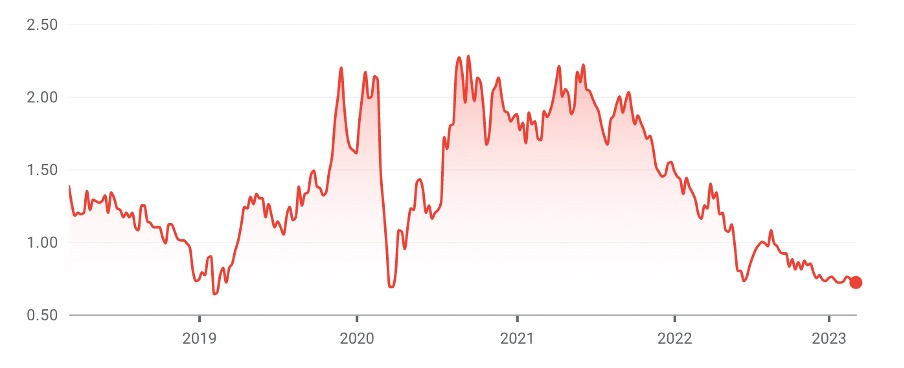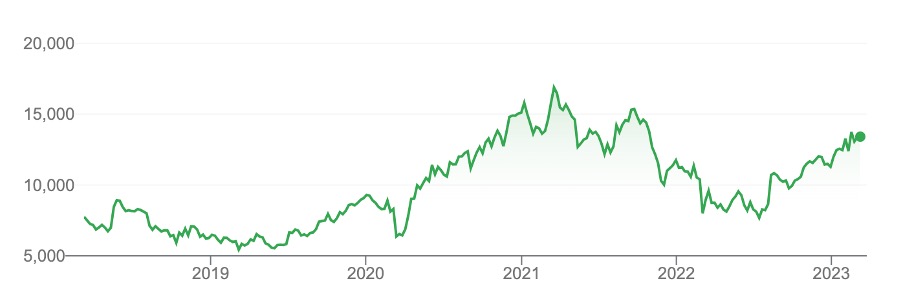I confess to watching too much sport this month. The return of the National Rugby League (NRL) season and the test cricket series between Australia and India hooked me.
No doubt I’ll watch even more sport in the next few weeks, as the Australian Football League (AFL) seasons starts. Then, cut back as the season gets established.
It’s hard to avoid professional sport with so much domestic and international content available through streaming at low cost or for free (with betting apps). Thanks to mobile devices and apps, people can watch this content and bet on it anywhere.
IBISWorld, a business forecaster, estimates Australia’s sports industry had revenue of almost $14 billion in 2022. About 10,000 organisations employed almost 80,000 people across sports administration, clubs, facilities, betting and other areas.
Industry revenue growth has slowed in recent years due to COVID-19 and also from the fragmentation of sports broadcasting content. The industry has still not returned to pre-pandemic levels, but that seems only a matter of time.
Some experts I know believe our sporting industry is entering a golden decade. Australia will host more major sporting events in the lead-up to the Brisbane 2032 Summer Olympics, and the Games will leave a lasting sporting legacy.
People usually focus on the infrastructure that Olympic Games create. But it’s the lead-up that interests me most: More kids playing sport and parents buying them equipment; higher consumption of sporting content; and increased sports betting.
I can imagine Super Retail Group’s sporting division (Rebel), and other sporting retailers, selling more goods in the next few years.
Australia will host the 2023 FIFA Women’s World Cup, 2026 Commonwealth Games, 2027 men’s Rugby World Cup, 2027 World Netball Cup, 2028 T20 World Cup and other international events, in addition to our usual tournaments.
Also, more athletes and teams will visit here in the lead-up to the 2032 Olympic Games to acclimatise themselves.
High-profile sporting events encourage participation and sales of sporting apparel and equipment. Look at how people go tennis mad during the Australian Open in January. These events also fuel greater consumption of sporting media, and can be a boon for sports-betting agencies that bombard us with their annoying ads.
But beyond gambling, Australia does not have a lot of listed sporting companies. Most ASX-listed sports are speculative microcaps. Several of them have burned investors.
Super Retail Group (ASX: SUL) has been one of my preferred stocks for years. It’s not a “sports stock”, although the company’s Super Cheap Auto division, Macpac and Boating Camping Fishing division have a sports/outdoor theme.
The well-run company has good long-term prospects, but looks fully valued for now. With pressure on consumers intensifying as interest rates rises, I need a larger margin of safety to buy retailers now. At its current price, Super Retail does not offer it.
Sports Entertainment Group (ASX: SEN) is another worth watching. SEN is best-known for its SEN Network for 24/7 SEN radio networks.
I’ll cover SEN in a future column. But suffice to say the microcap stock is well positioned as people consume more sporting media content over the next few years, around major events. I keep hearing good things about the company.
Here are two other ways to play the sports theme:
- Catapult Group International (ASX: CAT)
The market could not get enough of this sport-technology business when it listed on ASX in late 2014 after raising $12 million through an Initial Public Offering (IPO). Catapult’s 55-cent issued shares soared to $4 within two years of listing.
Investors loved Catapult’s market-leading technology for elite sports. Professional sporting teams from the AFL and NRL in Australia, to the English Premier League and National Football League (NFL) in the US, used Catapult technology.
Their athletes wear Catapult sensors during training and matches. The data provides valuable insights on player performance.
In addition to its athlete monitoring system, Catapult provides video analysis, monitoring and media and sporting services. About 3,650 professional sport teams across 40 sporting codes, in more than 100 countries, use its technology.
For all the potential, Catapult has been immensely disappointing for shareholders. The company did not deliver the revenue growth needed to justify the $4 share price at its peak. Lower-than-expected growth and management changes spooked the market.
Catapult now trades at 72 cents. Like other much-hyped tech stocks, it has been hammered during the past few years. Still, it’s hard to reconcile the extent of recent share-price falls with Catapult’s operational progress and latest earnings.
Catapult announced record half-year revenue of almost $60 million in the first half of FY23 – up 16% on the same half a year ago (in US-dollar terms). Almost 90% of that came from recurring subscription revenue.
The company is lowering its cash burn and expects to be free cash-flow positive in FY24. Catapult’s improving revenue profile has improved its access to credit. A recently upsized debt facility reduces the need for an equity capital raising, and removes the risk of such a raising diluting existing shareholders.
Like many high-growth companies, Catapult has invested heavily in its technology to consolidate its market position. Often, that creates mistakes and crushes the share price when investors realise the company cannot justify its valuation.
Nobody doubts Catapult has had its problems. But for all the gloom, it has terrific technology and thousands of elite sporting teams use its devices and video analytics. If Catapult can get its act together, it still has a lot of potential growth.
I like that Catapult has refocused its business. For a time, there was talk of its technology being used in consumer markets as private schools bought wearables technology for their top teams and as young athletes used Catapult gear.
Catapult should just focus on professional sports teams. That market is large enough, and has enough long-term growth, to serve Catapult many times over.
The key is being able to cross-sell more Catapult tech to each club, develop more hooks in each customer and turn that into recurring subscription revenue.
If Catapult does that, it will be worth a lot more than it is today. As a loss-making tech company, Catapult clearly suits experienced investors who understand the features, benefits and risks of investing in microcap tech stocks.
As in any turnaround situation, risks are high. But Catapult looks like a stock the market has given up on or forgotten – just as it’s getting interesting again.
Chart 1: Catapult Group

Source: Google Finance
- Flutter Entertainment Inc. (LSX: FLTR)
Many Australian investors might know little about Flutter Entertainment, a Dublin-based company that has its primary listing on the London Stock Exchange (LSX)
Flutter is global giant in sports betting, online gaming and online poker. It operates in more than 100 countries and owns the market-leading Sportsbet brand in Australia.
Flutter’s Australian division is its second-largest by earnings. If you watch televised sports, you will no doubt have seen Sportsbet’s never-ending “blokey” ads. Sportsbet is thought to have at least 50% market share of the local sports-betting market.
Australia is a relatively mature market in sports betting. Flutter’s big potential is in the United States as more states there legalise online sports betting. Flutter’s Fan Duel (fantasy sports brands) gives it a huge base of users to target.
Flutter’s business model is highly cash generative and it has valuable competitive advantages through its scale and technology. The stock has rallied in the past six months after falls in 2021, but still looks reasonably valued, trading just below the consensus price target.
If you believe more people will watch more sport this decade, in Australia and overseas – and wager on the result – Flutter is high-quality name to get exposure.
Chart 2: Flutter Entertainment

Source: Google Finance
Tony Featherstone is a former managing editor of BRW, Shares and Personal Investor magazines. The information in this article should not be considered personal advice. It has been prepared without considering your objectives, financial situation or needs. Before acting on information in this article consider its appropriateness and accuracy, regarding your objectives, financial situation and needs. Do further research of your own and/or seek personal financial advice from a licensed adviser before making any financial or investment decisions based on this article. All prices and analysis at 8 March 2023.

